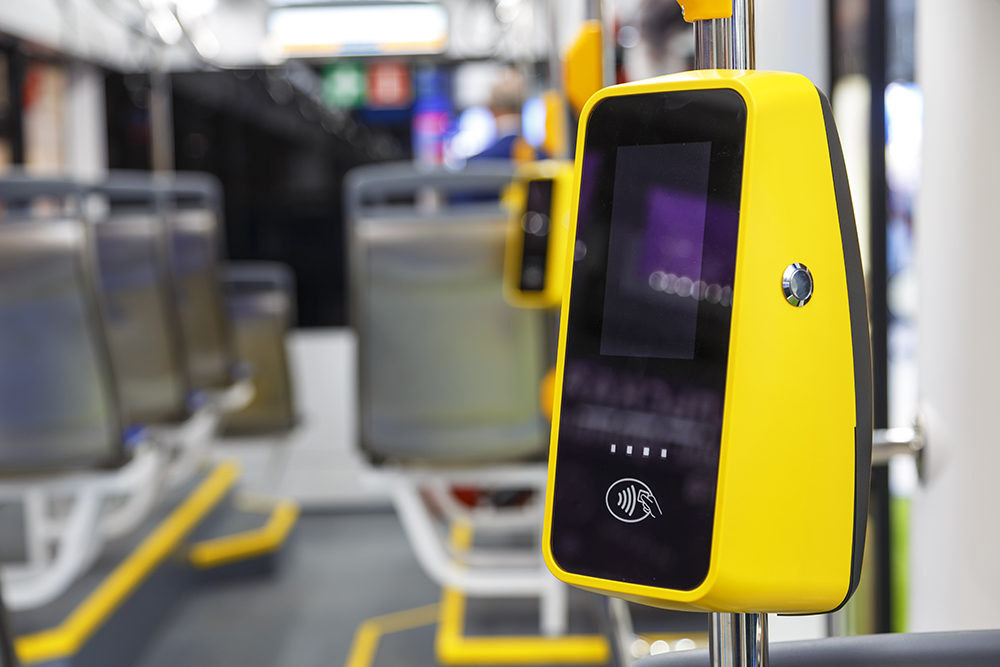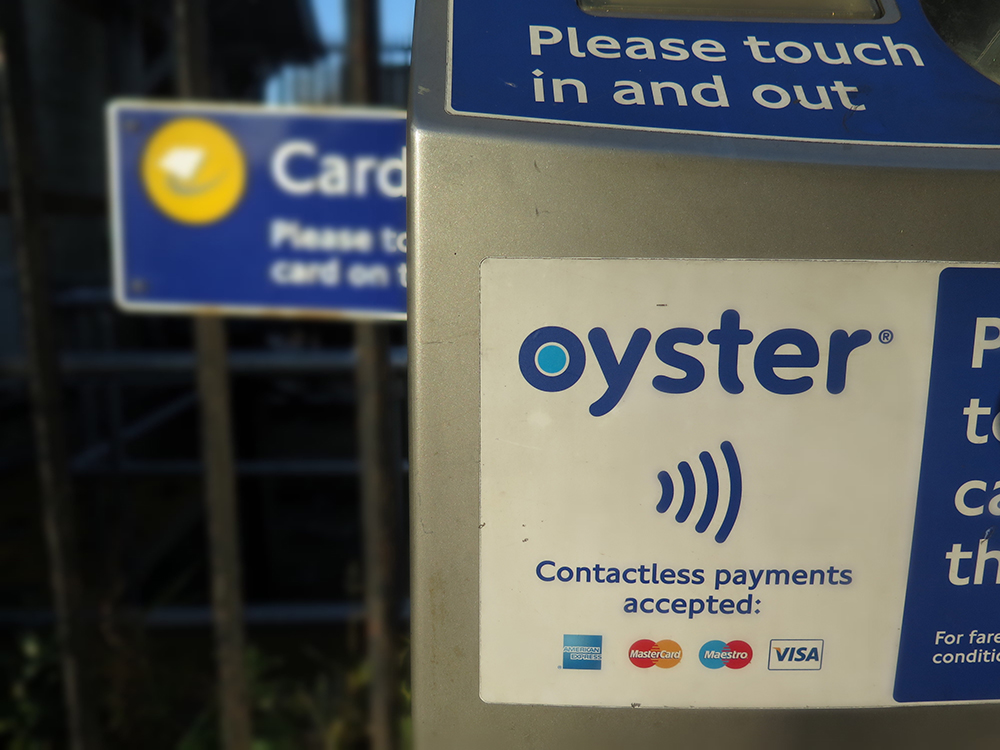
The technology in question is the open-loop payment system, which is slowly becoming ubiquitous, replacing the closed-loop versions familiar to travellers in cities such as London and Paris, with their Oyster and NaviGo smartcards.
In future, passengers will increasingly use any available contactless device, such as a smartphone or smart watch, to navigate transport networks, according to a new report – Open-Loop Payment in Public Transport - from the International Association of Public Transport (UITP).
Traditional paper tickets, which had survived since the 19th century, were initially replaced with automatic fare collection (AFC) systems such as those in London and Paris, in an effort to speed up passenger flows and reduce the cost of fare collection. Generally, AFC systems have been very successful, with millions of cards issued and high passenger satisfaction. However, they come at a cost. The public transport operator (PTO) is responsible for the maintenance of a large ticket retailing estate, as well as the costs of issuing cards.
Open-loop systems
Those costs in a major city – particularly one that attracts a large number of tourists – can be considerable, as the PTO faces a one-off cost of providing a card to someone who uses it, then disappears from the system within a couple of weeks.
Open-loop systems in public transport get around problems such as this. They combine the merits of smartcard tickets and payment cards into one system where the PTO no longer needs to provide and manage dedicated closed-loop smart cards.
In the wider world, meanwhile, the way that people choose to pay for goods and services has continued to evolve, and since 2010 contactless payments cards have become increasingly popular. This trend was accelerated by the Covid-19 pandemic, when initial fears of the virus being transmitted via notes and coins spurred greater use of plastic, or contactless payment systems.
Open-loop systems enable PTOs to take advantage of existing, globally interoperable payment media that most customers already have in their pocket, with card management being the responsibility of the issuing institution, typically a bank. The great advantage of the open-loop system is that passengers can use any payment device that they already possess – their smartphone or smart watch, for example – to pay for travel, said Andrea Soehnchen, project manager of the Urban Mobility Open Payment Forum at UITP.
A major challenge, of course, is providing access to travel to people who do not own any such contactless devices. However, effective marketing campaigns and easily available outlets for open-loop devices can be created, said Soehnchen. In Latin America, for example, payment cards are readily available from convenience stores.
One of the main distinguishing features of an open-loop system is that all the details of a person’s travel rights, such as discount rates for pensioners or the unemployed are stored in the back office, rather than on the card: “The card is merely an identifier,” explained Soehnchen. It links a passenger to a ticketing account and a bank account simultaneously.
“You could issue a type of travel pass for a community. You could have a student card act as a transport pass. You could use anything,” she adds.
There is no uniform way to innovate ticketing and payment, the UITP report notes. While technology offers many options to innovate, the speed and steps taken by PTOs depend on the performance of current solutions, investment strategies and passenger expectations.
Complex challenge
Integrating both worlds has been a complex challenge, the report admits. Transport for London (TfL) was first to offer open-loop payment for buses in 2012. Since then, the system has been further developed, is now available across all TfL services and the growing number of payments prove how popular open-loop is with passengers.
The success and experience gained in London has been translated into similar payment systems around the world.
Closed-loop ticketing relies on dedicated cards that store all funds, travel rights and records associated with the passenger on the cards themselves. They reflect the classic process in public transport: this requires customers to buy a ticket, which enables them to travel and they use this ticket to gain access into the PTO’s system.

“Open-loop payment removes the ticket from the equation entirely, as the payment card or mobile device becomes the ticket,” the report notes. “Passengers are able to access public transport simply by tapping a valid open-loop contactless payment media on the payment terminal.”
This means payment for the journey can either be realised during the trip, after completing the journey, or after all journeys taken that day, when the fare is calculated based on the actual use.
“No prior ticket purchase, app download or manual sign-up process is needed,” the report points out. “The customer simply uses the contactless payment method that they already use widely in their daily lives. With no dedicated smart card…open-loop payment generally relies on account-based ticketing systems, where travel rights and records are stored in the back end, where travel logic, fare policy, and also fare calculations can be done.”
The advantages are significant
Firstly, PTOs are not responsible for card management. They do not need to issue, stock, and replace smart cards as this is already managed by issuing institutions. Mobile payment via phones or wearables can be offered with little to no extra effort. Digital payments also offer the opportunity to shift sales from ticket vending machines or kiosks, which can help reduce costs.
Digital payments can also improve customer throughput and increase efficiency. Removing the friction of payment has significant benefits for the operator, including reducing or removing queues at travel locations such as rail stations, reducing bus dwell times and increasing efficiency of bus services.
Settling revenues
Open-loop systems allow operators to manage customers’ right to travel by holding their account information directly, rather than on a card. These systems can settle revenues with operators the same day.
“Passengers do not have to pre-purchase a ticket, download a bespoke app or spend time understanding which fare product to buy,” the UITP report notes.
“Relying on the global interoperability of payment cards and the business rules as established by the PTO, they can just tap and go, which lowers the entry barrier to public transport for all users, both those using the system every day, through to those occasional users. Making it easier for passengers to use public transport can also boost ridership.”
Some challenges remain, however. PTOs that currently operate a closed-loop smart card system may need to manage two systems in parallel for a time if introducing an open-loop system to complement their existing services, rather than replace the older cards immediately.
The old and the new
Facilitating payment for a journey requires infrastructure and equipment. The classic, card-centric public transport ticketing system includes the following elements:
The ticket: a paper ticket, magnetic card, smart card or digital ticket is needed as proof that a passenger has paid the fare.
Sales equipment: installations at staffed points of sales or ticket vending machines that allow passengers to purchase a ticket.
Validation equipment: fare gates or devices installed in vehicles and platforms are needed to validate the ticket.
Inspection equipment: handheld devices are needed to read tickets to verify whether the correct fare has been paid.
Open-loop payment removes two of these elements - the ticket and the sales equipment. The token needed to start a journey is a contactless payment card. Since there is no need to buy a ticket, no sales equipment needs to be provided. Passengers simply tap their contactless payment card and go.
Accepting payment cards directly also has an impact on validation and inspection equipment. Inspection equipment no longer focuses on verifying if the correct fare has been paid, but on whether the passenger has presented a valid bank card to gain access to public transport.
•Source: UITP





